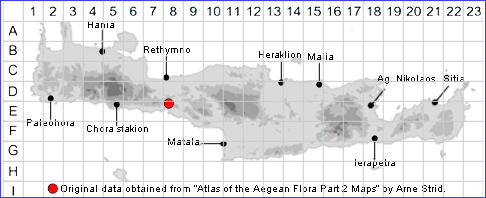
SENECIO RUPESTRIS
Family:- COMPOSITAE/Sect. JACOBAEA
Common Names:- None
Synonyms:- Senecio squalidus subsp. rupestris, Senecio squalidus var.
rupestris.
Meaning:- Senecio (L) Old-man, a name used by the Roman naturalist and
philosopher Pliny, reference to the grey hairiness as soon as fruiting starts.
Rupestris (L) Of rock, living in rocky places.
General description:- Annual or short-lived perennial, glabrous or with sparse,
arachnoid indumentum.
Stem:-
1) One to several, ascending, 5-30 cm.
Leaves:-
1) Almost glabrescent above, the
a) lower usually pinnatifid with rather distant lobes, attenuate into a winged
petiole.
b) upper cauline more or less pinnatifid, auriculate-amplexicaul, (more rarely all
leaves dentate).
Flowers:-
1) Capitula 15-25 mm. diam, few to numerous in a lax, irregular corymb.
2) Involucral bracts c. 20, 7-10 mm, narrowly campanulate.
a) outer phyllaries 8-12.
b) inner 18-24, all black-tipped.
3) Ligules c. 13, 10-12 mm, bright yellow.
Fruit:-
1) Achenes 2.5-3 mm, cylindrical, strigulose.
Key features:-
1) At least some leaves ± pinnatifid.
2) Supplementary bracts 5-13, usually black-tipped; 1/4 as long as the involucre.
3) Leaves entire or with ± remote, patent teeth.
4) Stems branched from the base or the middle.
5) Young shoots subglabrous to floccose.
6) Branches of the inflorescence ± patent.
7) Achenes 2-3 mm.
Habitat:- Rocky and stony slopes, damp screes, mainly on limestone. 200-2450
m.
Distribution:- C. & SE. Europe, fairly common in the mountains of mainland
Greece, but rare and scattered in the Aegean, Abundantly naturalised and local
elsewhere. Rare on Crete known only from the Kotsifou gorge.
Flowering time:- May-Aug.
Photos by:- Fotis Samaritakis and Uta Vrasna
SPECIES DESCRIPTION
